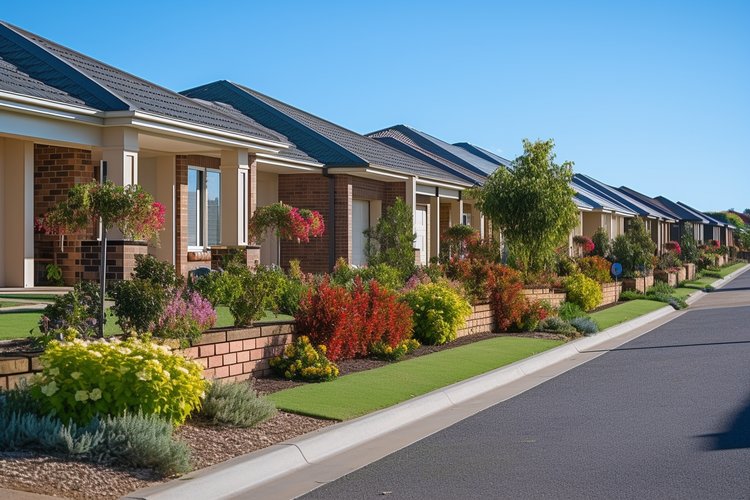Title: Adaptive Reuse: Transforming Urban Landscapes Through Real Estate
In the ever-evolving world of real estate, a revolutionary trend is reshaping cityscapes and breathing new life into forgotten structures. Adaptive reuse, the practice of repurposing existing buildings for new functions, is gaining momentum as developers, investors, and city planners recognize its potential to revitalize urban areas while preserving architectural heritage. This innovative approach not only addresses the challenges of urban sprawl and limited land availability but also offers unique investment opportunities in an increasingly competitive market.

Historical Context and Evolution
The concept of adaptive reuse is not entirely new, but its application in modern real estate has evolved significantly. Historically, buildings were often repurposed out of necessity, such as converting old warehouses into living spaces during housing shortages. However, in recent decades, adaptive reuse has transformed into a deliberate strategy for urban revitalization and sustainable development. This shift has been driven by factors such as increased environmental awareness, a growing appreciation for historical preservation, and the need for innovative solutions in densely populated urban areas.
Economic and Environmental Benefits
From an economic standpoint, adaptive reuse projects often prove more cost-effective than new construction. By utilizing existing structures, developers can potentially save on demolition costs, reduce construction time, and benefit from the inherent character and quality of older buildings. Additionally, these projects frequently qualify for tax incentives and grants aimed at encouraging urban renewal and historical preservation.
Environmentally, adaptive reuse aligns with sustainable development goals by reducing waste, conserving resources, and minimizing the carbon footprint associated with new construction. Repurposing existing buildings helps to preserve embodied energy – the sum of all the energy required to produce a building, including the mining and processing of natural resources, manufacturing, transportation, and construction. This approach significantly reduces the environmental impact compared to demolition and new construction.
Challenges and Considerations
While adaptive reuse offers numerous benefits, it also presents unique challenges. Developers must navigate complex zoning regulations, address potential environmental hazards such as asbestos or lead paint, and find creative solutions to adapt outdated structures to modern building codes and accessibility standards. Additionally, the unpredictable nature of working with existing structures can lead to unexpected costs and delays.
Investors and developers considering adaptive reuse projects must conduct thorough due diligence, including comprehensive structural assessments, environmental studies, and market analyses to ensure the viability and profitability of their ventures. Successful projects often require a delicate balance between preserving historical elements and incorporating modern amenities to meet the needs of today’s users.
Market Trends and Investment Opportunities
The adaptive reuse trend has gained significant momentum in recent years, with markets across the globe seeing an increase in innovative repurposing projects. In the United States, for example, the conversion of former industrial spaces into trendy loft apartments, offices, and mixed-use developments has become particularly popular in cities with rich industrial histories like New York, Chicago, and Detroit.
According to recent market research, the global adaptive reuse market is expected to grow at a compound annual growth rate (CAGR) of 7.8% from 2021 to 2028. This growth is driven by factors such as urbanization, sustainability initiatives, and the increasing scarcity of prime development sites in major cities.
For real estate investors, adaptive reuse projects offer unique opportunities to differentiate their portfolios and tap into niche markets. These projects often appeal to tenants and buyers seeking distinctive spaces with character and history, potentially commanding premium rents or sales prices. Additionally, as cities implement policies to encourage sustainable development and historical preservation, investors in adaptive reuse projects may benefit from favorable regulatory environments and financial incentives.
Case Studies: Success Stories in Adaptive Reuse
Examining successful adaptive reuse projects can provide valuable insights for investors and developers considering similar ventures. One notable example is the High Line in New York City, a former elevated railway transformed into a public park and cultural destination. This project not only revitalized a neglected urban structure but also catalyzed significant real estate development in the surrounding neighborhoods, demonstrating the potential for adaptive reuse to drive broader urban renewal.
Another compelling case is the Tate Modern in London, housed in the former Bankside Power Station. The conversion of this industrial building into one of the world’s most visited modern art museums has not only preserved an important piece of architectural heritage but has also become a major driver of tourism and economic activity in the area.
These high-profile examples illustrate how adaptive reuse can transform not just individual buildings but entire neighborhoods and cities, creating value that extends far beyond the property lines.
Future Outlook and Emerging Trends
As cities continue to evolve and face new challenges, adaptive reuse is likely to play an increasingly important role in urban development strategies. Emerging trends in this space include the conversion of underutilized office buildings into residential or mixed-use spaces, a trend accelerated by changing work patterns in the wake of the COVID-19 pandemic. Additionally, the adaptive reuse of retail spaces, particularly struggling malls, into healthcare facilities, educational institutions, or community centers, represents a growing opportunity in many markets.
The future of adaptive reuse will likely be shaped by advancements in technology and construction techniques that make it easier and more cost-effective to retrofit older buildings. Innovations in energy-efficient systems, modular construction, and 3D modeling are already enhancing the feasibility and sustainability of adaptive reuse projects.
As the real estate industry continues to grapple with issues of sustainability, affordability, and urban density, adaptive reuse offers a compelling solution that addresses multiple challenges simultaneously. For investors, developers, and urban planners, mastering the art of reimagining existing structures may well be the key to unlocking value in the cities of tomorrow.





